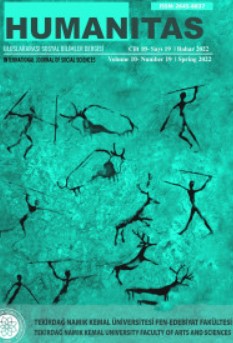Mardin Müzesi’nden İki Pişmiş Toprak Ampulla
Two Terracotta Ampullae from Mardin Museum
Author(s): Murat TOSUNSubject(s): Cultural history, Museology & Heritage Studies, Ancient World, 6th to 12th Centuries
Published by: Namık Kemal Üniversitesi Fen-Edebiyat Fakültesi
Keywords: Mardin museum; Ampulla; Late antiquity; Asia Minor (Anatolia); Greek cross;
Summary/Abstract: Ampullae, which are believed to heal by being put into liquid products in the Late Antiquity, are kinds of bottles that are mostly found in pilgrimage centers. Two ampullae made of terracotta in Mardin Museum have been brought to the museum through purchase. These ampullae, which are so small in size, are evaluated in the group called Type 2 originating from Asia Minor in the literature. Ampullae show a characteristic of Asia Minor origin with the addition of red toned clay and slip colors as well as the mica additive in the clay. Both ampullae are mold making. Ampulla No. 1 has only an embossed Greek cross, while Ampulla No. 2 has a simple Greek cross in the center, as well as round medallionlike circles and dots. Considering typologically similar examples, they are thought to be dated to belong to the 5th century-7th the beginning of the century.
Journal: Humanitas - Uluslararası Sosyal Bilimler Dergisi
- Issue Year: 10/2022
- Issue No: 19
- Page Range: 297-317
- Page Count: 21
- Language: Turkish

